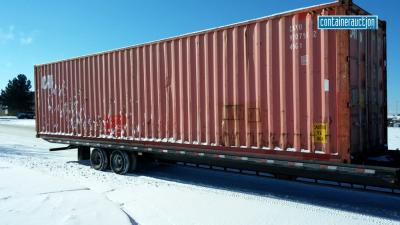Insulation for a Shipping Container

There are loads reasons why you'd want to insulate a shipping container - you're converting it to modular housing, a work shop in a cold or hot environment, or you're creating a storm shelter or prepper bunker and want to make sure that you're comfortable in it, no matter what the exterior climate might be. With all the reasons that you'd want to insulate the container, there are fewer options for how to insulate it, and only a few of them make sense. ContainerAuction.com recently posted an article on "how to insualte a shipping container" and they had an expert propose a different approach - rigid mineral wool insulation.
What is Rigid Mineral Wool Insulation?
Rigid mineral wool, sometimes called "rock wool" (no, it will not "rock ewe"!), is ideal for situations when the insulation is under compression. Floors, joists, ceilings, or inside of wall cavities. It's good for DIY because it's simple to install and can be found in many local contractors stores.
Benefits of Rigid Mineral Wool Insulation
Direct from the expert, Todd Collins of A&E Building Systems of Denver, CO:
It is fire proof, vapor open and r-4+ per inch. Mineral wool has a melting point around 2000 F making it fantastic for fire. The vapor open part is important because if any moister gets in behind the insulation, mineral wool will allow it to dry out. The other options out there are not vapor open and your container will rust. And finally, you can get r-16+ from 4 inches of rigid mineral wool and more if you want more of course.
Other Container Insulation Techniques
Some other conventional shipping container insulation sources include fiberglass insulation, spray foam insulation, or rigid foam insulation. All options are good, however fiberglass and rigid foam insulation would need to be installed on the inside of the container for maximum effectiveness, and inside they would reduce the internal space as well as trap condensation against the walls of the container, expediting rust and corrosion. Foam insulation is a nice idea, but it tends to decompose, and must be protected otherwise it will decompose faster than it would naturally - especially if it's touched.
No matter your container project, if you're going to be spending any amount of time inside of the unit you'll want to make sure that it's cool when you want it cool, and warm when you want it warm. Do a little research on your own, and make sure that your container is insulated to the best possible level.
If you have any questions about insulating shipping containers contact A&E Building Systems, and if you have any questions about buying a shipping container contact ContainerAuction.com.
